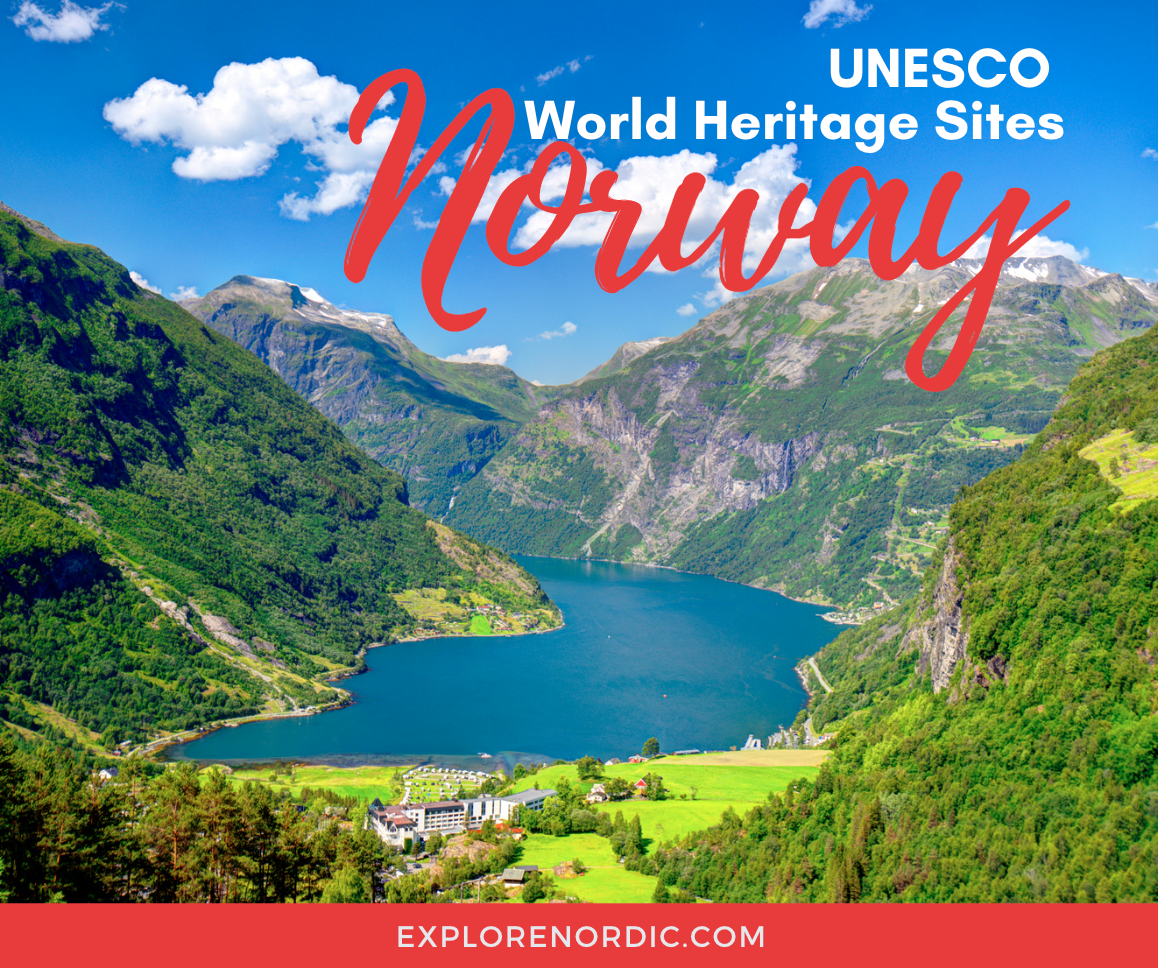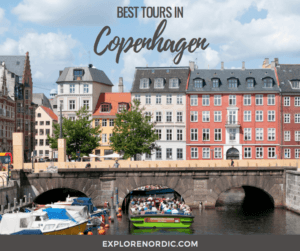Are you looking for UNESCO World Heritage Sites in Norway? Norway, a captivating country renowned for its picturesque landscapes and rich cultural heritage, boasts several UNESCO World Heritage Sites. These exceptional destinations have garnered international recognition for their outstanding universal value, preserving both natural wonders and cultural treasures. Join us on an enchanting journey as we explore Norway’s UNESCO listings and delve into the stories they hold. But, first how does a site get UNESCO listed?
What It Takes to Be Listed as a UNESCO World Heritage Site
To be listed as a UNESCO World Heritage site, a location must fulfill certain criteria and undergo a rigorous evaluation process. The process involves the following steps:
- Tentative List: Before being considered for inscription, a country must submit a list of potential sites on its territory to UNESCO. This is known as the Tentative List and serves as an inventory of potential candidates for future nomination.
- Nomination: Once a site is selected from the Tentative List, the country can submit a nomination dossier to UNESCO. The dossier provides detailed information about the site. These include its cultural, historical, or natural significance, integrity, and management plans. The nomination must demonstrate how the site meets one or more of the ten criteria set by UNESCO.
- Evaluation by ICOMOS/ICOM: The International Council on Monuments and Sites (ICOMOS) and the International Council of Museums (ICOM) evaluate the nominated sites. They conduct extensive research, assess the site’s value, and evaluate its compliance with the specified criteria.
- Recommendation: Based on the evaluations, ICOMOS/ICOM make recommendations to the UNESCO World Heritage Committee. The committee, consisting of representatives from different countries, meets annually to review the nominations and make final decisions on inscriptions.
- Inscription: If a site meets the criteria and is deemed to have outstanding universal value, the UNESCO World Heritage Committee inscribes it on the World Heritage List. The inscription acknowledges the site’s cultural, historical, or natural significance and promotes its preservation for future generations
Ongoing Management
Once a site is listed, the responsibility for its preservation lies with the country in which it is located. The country must develop a management plan to ensure the site’s protection, conservation, and sustainable use. UNESCO provides guidance and support to the country in managing and safeguarding the site.
It’s important to note that the World Heritage List recognizes both cultural and natural sites. Cultural sites can include historical landmarks, archaeological sites, architectural complexes, or urban areas of cultural significance. Natural sites can encompass national parks, ecosystems, geological formations, or habitats of exceptional natural value.
The UNESCO World Heritage designation is highly prestigious and serves to raise awareness about the site’s significance, attract tourism, and mobilize international support for its preservation.
UNESCO World Heritage Sites in Norway
There are 1 Natural and 7 Cultural UNESCO World Heritage sites in Norway. Let’s take a closer look at them, starting with the natural area of the West Norwegian Fjords area.
Natural 1. West Norwegian Fjords – Geirangerfjord & Naeroyfjord (2005)
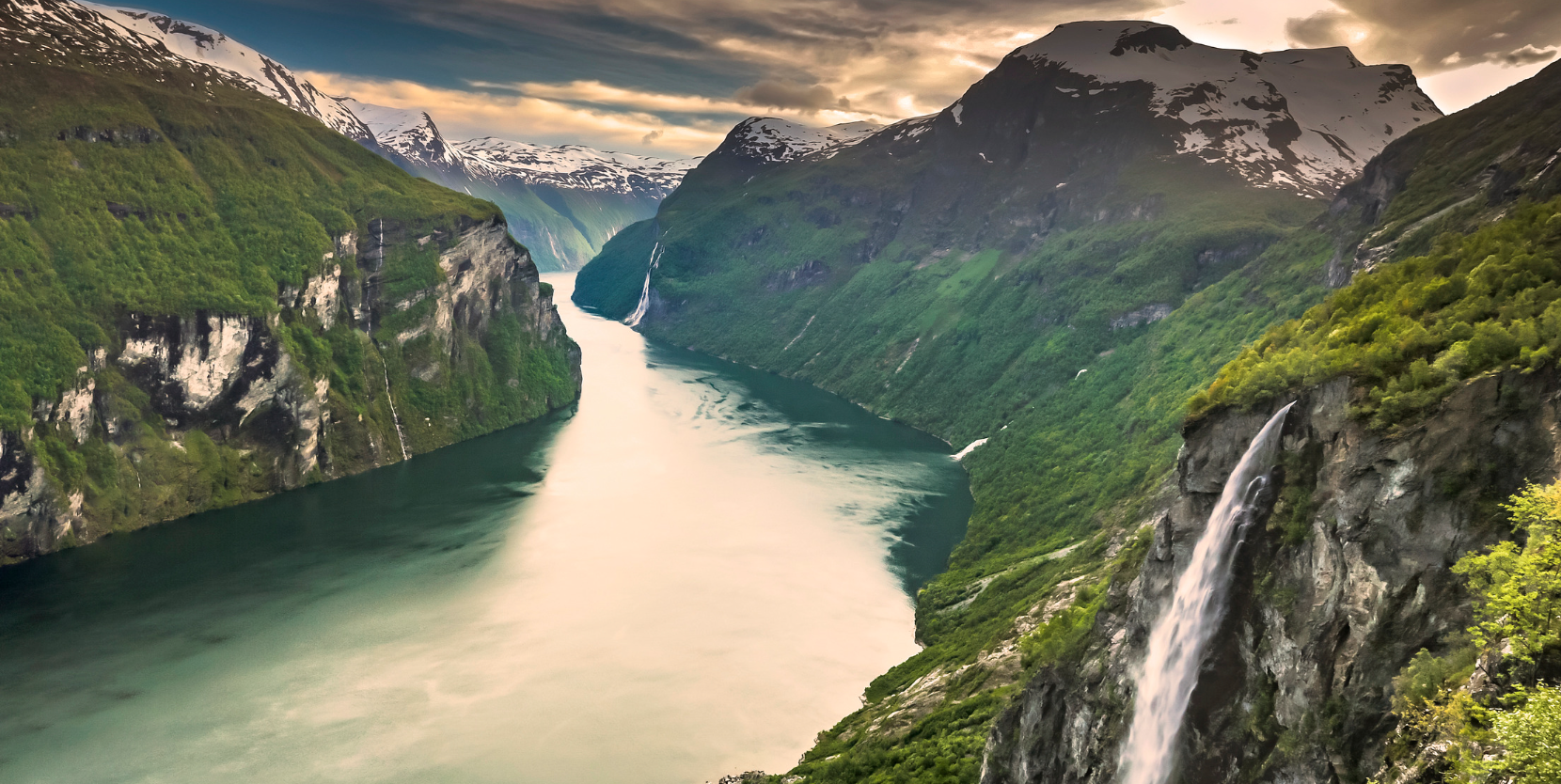
Nature’s Majestic Masterpieces
Norway’s stunning landscapes are renowned worldwide, but nestled within its western fjord region lies a natural wonder that is truly extraordinary. The UNESCO-listed West Norwegian Fjords, encompassing Geirangerfjord and Nærøyfjord, captivate visitors with their awe-inspiring beauty and raw natural splendor. Explore the remarkable features and profound significance of these fjords, which have earned their rightful place on the prestigious UNESCO World Heritage List.
Geological Marvels
Geirangerfjord and Nærøyfjord showcase the remarkable power of natural forces that shaped the Norwegian landscape over millions of years. These fjords are the result of glacial erosion, where massive ice sheets carved deep, narrow valleys into the surrounding mountains. The result is a breathtaking display of cliffs, cascading waterfalls, and serene blue waters that create an otherworldly panorama.
Geirangerfjord: The Jewel of the Fjords
Geirangerfjord, often referred to as the crown jewel of the fjords, is a 15-kilometer-long fjord known for its dramatic beauty. The fjord’s deep waters are flanked by towering snow-capped mountains, creating a surreal backdrop that leaves visitors in awe. The Seven Sisters Waterfall, one of Geirangerfjord’s iconic features, is a cascading wonder that adds to the fjord’s enchantment.
Nærøyfjord: A Canyon of Tranquility
Nestled amidst steep mountain slopes, Nærøyfjord presents a striking contrast between rugged landscapes and tranquil waters. This 18-kilometer-long fjord offers a more intimate and secluded experience, with its narrow width and breathtaking serenity. As you sail through its picturesque waters, you’ll be surrounded by towering cliffs, idyllic villages, and cascading waterfalls, immersing yourself in a truly magical setting.
Unique Flora and Fauna
The West Norwegian Fjords are home to a diverse array of plant and animal life, thriving in the pristine natural habitats created by the fjords. The steep slopes provide ideal conditions for rare and endangered species. These include the majestic white-tailed eagle and various seabirds. In the surrounding forests, you can encounter deer, foxes, and other woodland creatures, adding to the rich biodiversity of the region.
Cultural Significance
Beyond their natural wonders, the West Norwegian Fjords hold immense cultural significance. The fjords have served as vital transportation routes and fishing grounds for generations, shaping the livelihoods and traditions of local communities. The small settlements dotting the fjords’ shores offer glimpses into the region’s rich cultural heritage, with their unique architecture, traditions, and warm hospitality.
Exploring the Fjords
To truly appreciate the grandeur of Geirangerfjord and Nærøyfjord, exploring them firsthand is a must. Embark on a boat cruise, kayak adventure, or scenic drive along the fjords’ winding roads to immerse yourself in their breathtaking vistas. Hiking trails along the fjord walls offer stunning viewpoints that allow you to enjoy the fjords’ immensity and appreciate their natural beauty up close.
The UNESCO West Norwegian Fjords, encompassing Geirangerfjord and Nærøyfjord, stand as nature’s majestic masterpieces. Their inclusion on the UNESCO World Heritage List celebrates their extraordinary beauty, geological significance, and cultural heritage.
Cultural 1. Exploring the Timeless Charms of Bryggen in Bergen: A UNESCO World Heritage Site (1979)
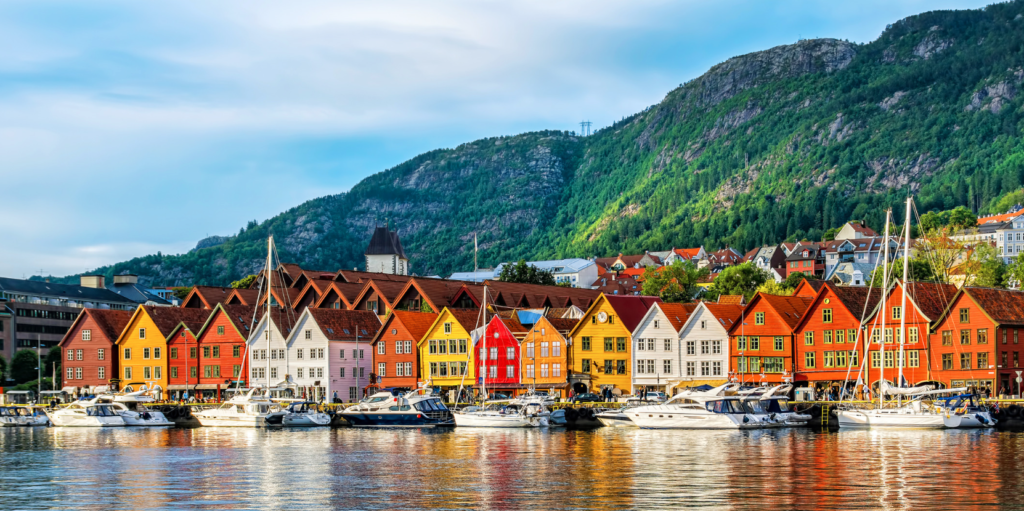
Nestled on the southwestern coast of Norway, the enchanting city of Bergen captivates visitors with its rich history, stunning natural landscapes, and vibrant cultural scene. At the heart of this captivating city lies a UNESCO World Heritage Site known as Bryggen. With its iconic row of colorful wooden buildings lining the picturesque harbor, Bryggen offers a glimpse into Bergen’s past as a vital center of trade during the Hanseatic League era. Let’s uncover the timeless charms and historical significance of Bryggen in Bergen.
A Historic Trading Hub
Bryggen, meaning “the wharf” in Norwegian, has a fascinating history dating back to the 12th century. As a vital hub for the Hanseatic League, a powerful medieval trading alliance, the area was a bustling center of commerce. German merchants established a trading post here, creating a vibrant community that thrived for centuries. The buildings of Bryggen housed offices, warehouses, and living quarters It formed a unique and self-contained trading community.
The Architecture
The architecture of Bryggen is a defining feature that makes it an architectural gem. The iconic wooden structures, known as “Bryggen houses,” showcase a distinct style that reflects both German and Norwegian influences. The buildings feature colorful facades, narrow passages, and characteristic stepped gables. Although the original buildings were ravaged by fires over the centuries, they were meticulously rebuilt using traditional methods and materials, preserving their authentic charm.
A Living Heritage
Today, Bryggen stands as a living heritage site, where visitors can immerse themselves in its historical ambiance. The buildings house an array of unique shops, art galleries, restaurants, and museums. It also showcase local craftsmanship, traditional arts, and contemporary culture. Exploring the narrow alleyways and hidden courtyards, visitors can experience the authentic atmosphere of this remarkable place. While also discovering local artisans and enjoying the flavors of Norwegian cuisine.
Bryggen Museum
To delve deeper into the history of Bryggen, a visit to the Bryggen Museum is a must. Located in one of the original Hanseatic buildings, the museum offers a captivating journey through time. Through interactive exhibits and artifacts, visitors can gain insights into the lives of the Hanseatic merchants, their trading practices, and the challenges they faced. The museum also sheds light on the fires that plagued Bryggen throughout its history. Along with the restoration efforts that preserved its unique character.
Bergen’s Cultural Hub
Bryggen is not only a historical site but also a cultural hub that pulsates with artistic and cultural events. The annual Bergen International Festival attracts world-class musicians, artists, and performers. It showcase the city’s vibrant cultural scene. Visitors can also enjoy traditional music and dance performances, art exhibitions, and theater productions throughout the year. Immersing themselves in Bergen’s artistic heritage.
Bryggen in Bergen stands as a testament to the city’s rich trading history and cultural heritage. Its UNESCO World Heritage status ensures the preservation of this remarkable site for future generations to appreciate. As you wander through the narrow alleyways, soak in the colorful facades, and feel the echoes of the past, Bryggen will transport you to a bygone era. Here the spirit of trade, community, and craftsmanship intertwines to create an unforgettable experience. A visit to Bryggen is an invitation to unravel the layers of Bergen’s captivating story and embrace the magic of this timeless UNESCO site.
2. UNESCO Urnes Stave Church: A Timeless Treasure of Norwegian Heritage (1979)
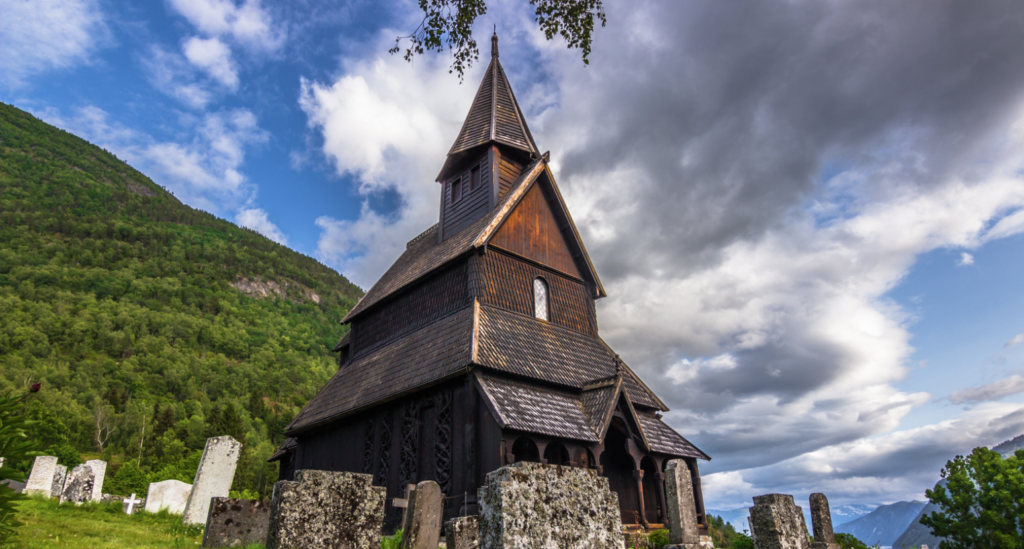
Tucked away amidst the majestic landscapes of Norway lies a hidden gem that embodies centuries of history and architectural brilliance: the Urnes Stave Church. Recognized as a UNESCO World Heritage Site, this remarkable wooden structure stands as a testament to Norway’s rich cultural heritage. It offers a glimpse into the country’s early Christian era. Join us on a virtual journey as we explore the enchanting allure and profound significance of the Urnes Stave Church.
A Testament of Time
Dating back to the 12th century, the Urnes Stave Church is one of the oldest and most well-preserved stave churches in Norway. The church’s construction signifies the transition from Viking-era paganism to Christianity, with its architectural style reflecting a blend of Norse and Christian traditions. It serves as a timeless witness to the cultural and religious transformation that shaped Norway’s history.
Architectural Marvel
The architectural splendor of the Urnes Stave Church is truly awe-inspiring. Its intricate wooden framework, characterized by the stave construction technique, is a marvel of medieval craftsmanship. The church features a combination of Christian motifs, including ornate carvings depicting scenes from the Bible, alongside Viking-inspired imagery that reflects Norway’s pre-Christian heritage. The delicate interplay of these influences creates a unique and captivating aesthetic.
The Delicate Carvings
The Urnes Stave Church is renowned for its exquisite carvings, which adorn both the exterior and interior of the church. Elaborate patterns of intertwined animals, vines, and mythical creatures, known as the Urnes style, grace the church’s portals and intricate wooden details. These carvings not only showcase the exceptional skill of the craftsmen but also offer insights into Norse mythology, Christian symbolism, and the cultural fusion of the era.
A Spiritual Haven
Stepping inside the Urnes Stave Church is a truly ethereal experience. The tranquil atmosphere and dimly lit interior create a sense of reverence and spirituality. Visitors are greeted by the enchanting scent of aged wood and the soft glow of candlelight, further enhancing the church’s mystical ambiance. As you explore the interior, you’ll be immersed in the hallowed history and the profound sense of devotion that has resonated within its walls for centuries.
Preservation and UNESCO Recognition
The preservation and protection of the Urnes Stave Church have been of paramount importance to safeguard this invaluable cultural heritage. Its inclusion on the UNESCO World Heritage List serves as a testament to its universal value and the commitment of Norway to ensure its long-term preservation. Strict conservation efforts have been undertaken to maintain the church’s structural integrity, allowing visitors to experience its magnificence in its original form.
Visiting the Urnes Stave Church
For those fortunate enough to visit Norway, a journey to the Urnes Stave Church is a must. Situated on the picturesque shores of the Lustrafjord, the church offers a serene and idyllic setting. As you approach the church, you’ll be greeted by the intricate carvings that adorn its exterior. Exploring the interior and basking in the tranquility of this sacred space provides an opportunity to connect with Norway’s rich heritage. Also, witness the timeless legacy of the country’s religious and architectural traditions.
The Urnes Stave Church stands as a testament to Norway’s cultural richness and architectural brilliance. Its intricate carvings, historical significance, and UNESCO World Heritage status make it a must-visit destination for history enthusiasts, architecture lovers, and those seeking a connection with Norway’s past. As you step into the hallowed halls of the Urnes Stave Church, you’ll be transported to a bygone era, where spirituality and craftsmanship.
3. Rjukan-Notodden Industrial Heritage Site (2015)
Witness the incredible achievements of Norway’s industrial past at Rjukan and Notodden. These interconnected sites showcase the innovative development of hydroelectric power and the production of artificial fertilizers. These reflects Norway’s groundbreaking technological advancements.
4. Rock Art of Alta (1985)
Uncover ancient stories etched in stone as you explore the Rock Art of Alta. These captivating rock carvings, created by the prehistoric Sami people, provide a window into their lives, rituals, and mythical beliefs. Marvel at the intricate details and experience a deep connection with Norway’s rich cultural heritage.
5. Røros Mining Town and the Circumference (1980, 2010)
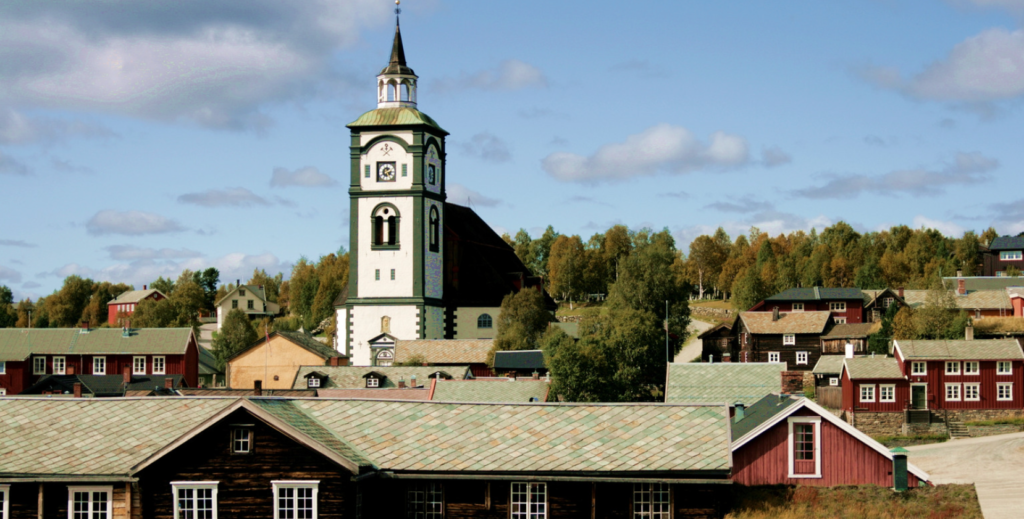
Step into the well-preserved mining town of Røros and wander through its historic streets lined with wooden houses. This UNESCO site offers a glimpse into the once-thriving copper mining industry and the unique cultural traditions of the local community. Discover the fascinating history, craftsmanship, and spirit that still thrives in this captivating town.
6. Struve Geodetic Arc (2005)
Embark on a scientific journey along the Struve Geodetic Arc, an impressive chain of survey triangulations spanning ten countries. This collaborative project, instrumental in measuring the shape and size of the Earth, showcases the ingenuity and cooperation of nations in the pursuit of scientific knowledge.
7. Vegaøyan – The Vega Archipelago (2004)
Explore the tranquil Vega Archipelago, where the centuries-old tradition of eider duck farming harmoniously coexists with the untouched natural beauty of the coastal landscape. This UNESCO site showcases the remarkable relationship between humans and nature, offering a glimpse into the sustainable practices of the local community.
Norway’s UNESCO World Heritage Sites embody the country’s deep-rooted history, remarkable natural landscapes, and cultural treasures. From the ancient rock carvings of Alta to the majestic fjords of Geiranger and Nærøy, each site tells a unique story that captivates the imagination and leaves visitors in awe. Embark on an unforgettable journey through Norway’s wonders and immerse yourself in the extraordinary beauty and cultural heritage that these sites have to offer. Plan your visit today and let the treasures of Norway’s UNESCO World Heritage Sites leave an indelible mark on your heart and soul.


